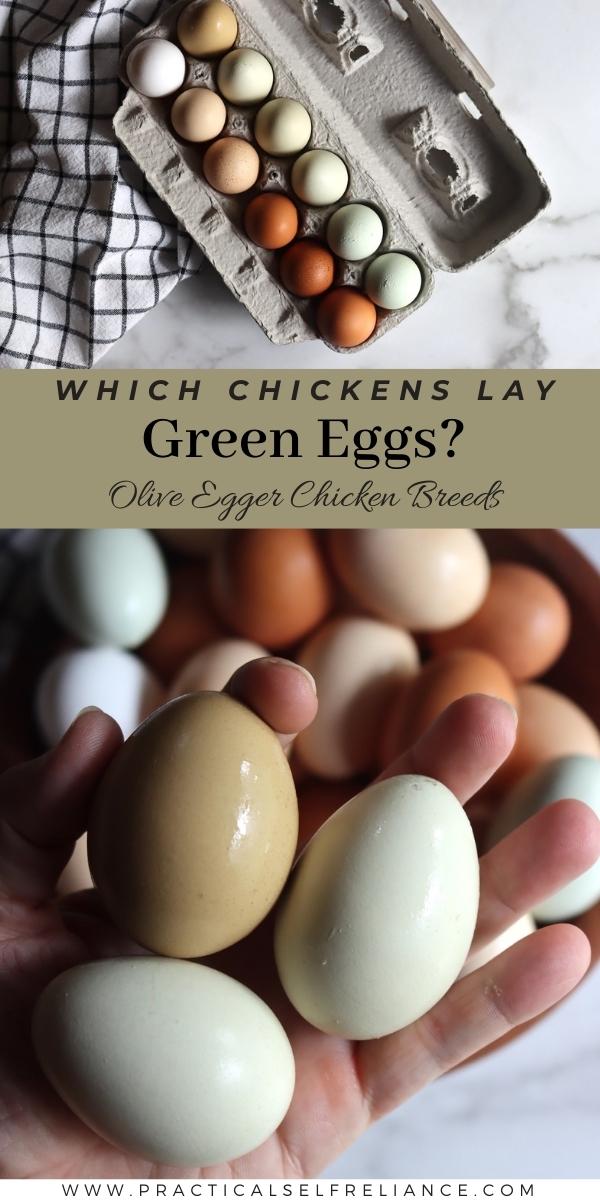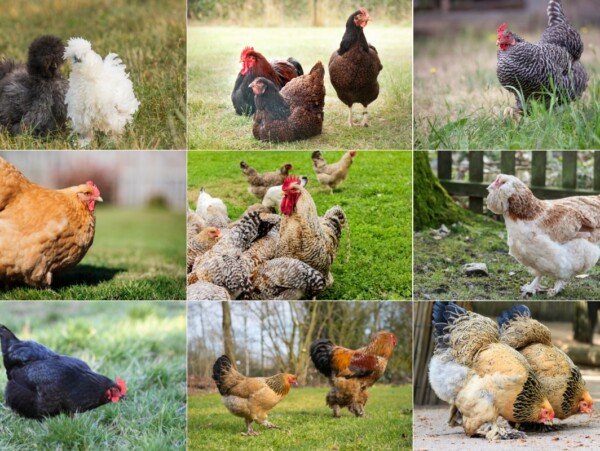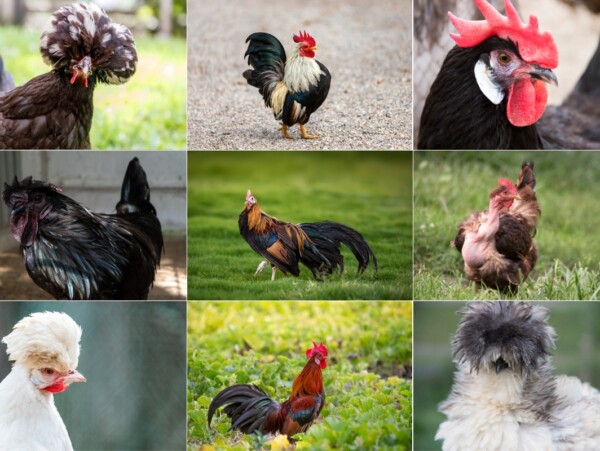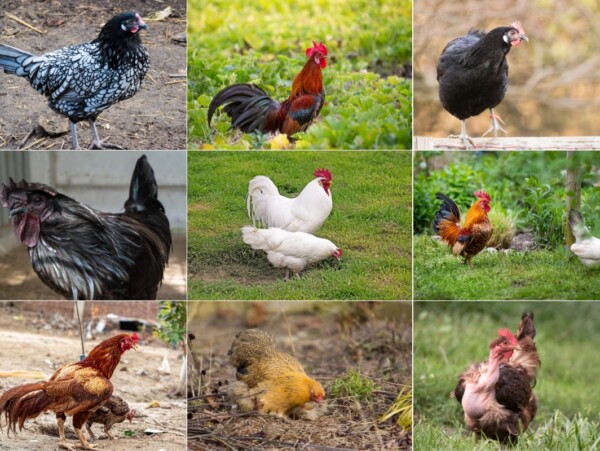Affiliate disclosure: This post may contain affiliate links. Please see our Privacy Policy.
Olive eggers is a name for chickens that lay green eggs, rather than a specific chicken breed. Almost all “olive egger” chickens are mixed breeds, usually from mixing breeds that lay blue eggs and brown eggs.
The cross can happen intentionally or accidentally in mixed backyard flocks. If you mix the right breeds, you can create your own olive egger chickens and have some of the most unique eggs anywhere.
Since olive eggers aren’t a specific pure breed of chickens that lay green eggs, it can be tricky to find them at hatcheries. Don’t worry, there are a few hatcheries that breed them special for backyard hobbyists that want the most colorful eggs.
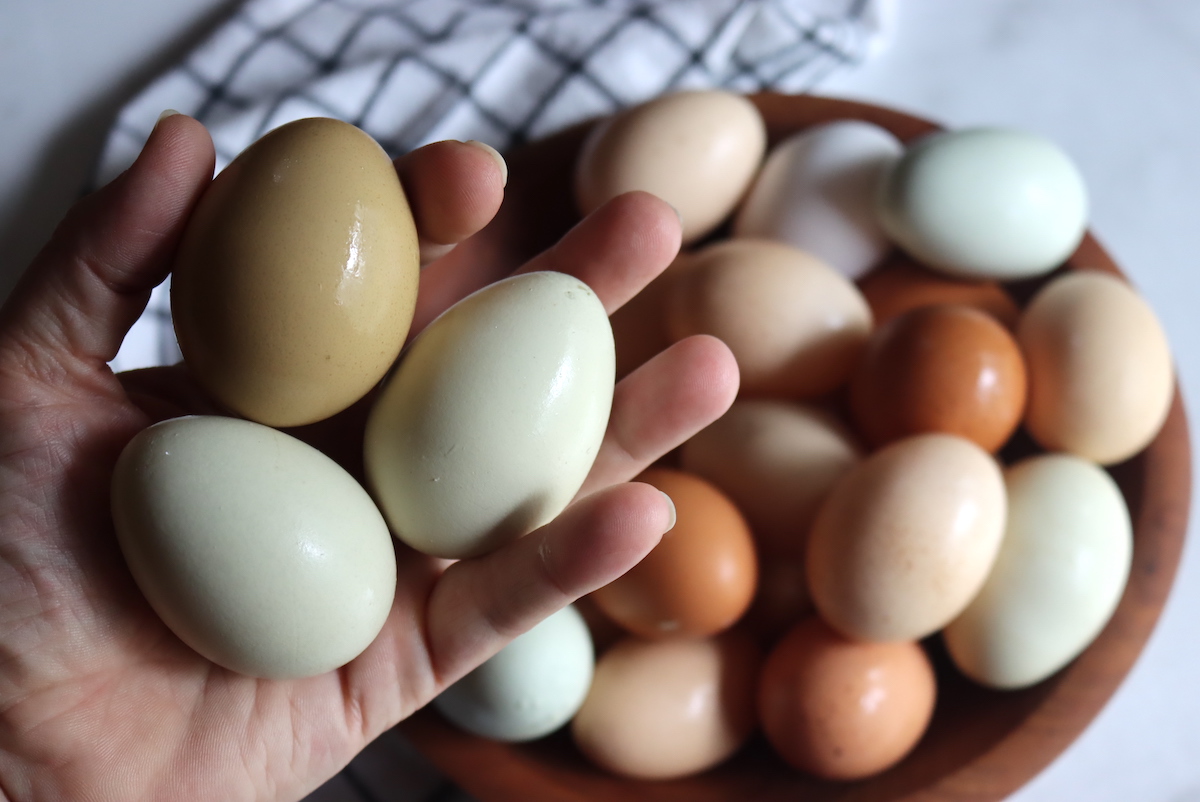
What are Olive Egger Chickens?
Despite having a name that suggests otherwise, olive egger chickens are not a specific breed of chicken that lays olive-colored eggs. Instead, olive egger chickens are the result of breeding one type of chicken that lays brown eggs and another type that lays blue eggs (either a blue-egg rooster and a brown-egg hen, or a brown-egg rooster and a blue-egg hen).
When a cross-bred female chick matures and begins to lay eggs, usually at around 5 or 6 months, the resulting eggs will be various shades of pastel green, usually closest to an olive green color. Depending on the heritage of your olive egger hen, you can expect 3 to 4 of these eggs every week or 140 to 200 medium-sized eggs per year.
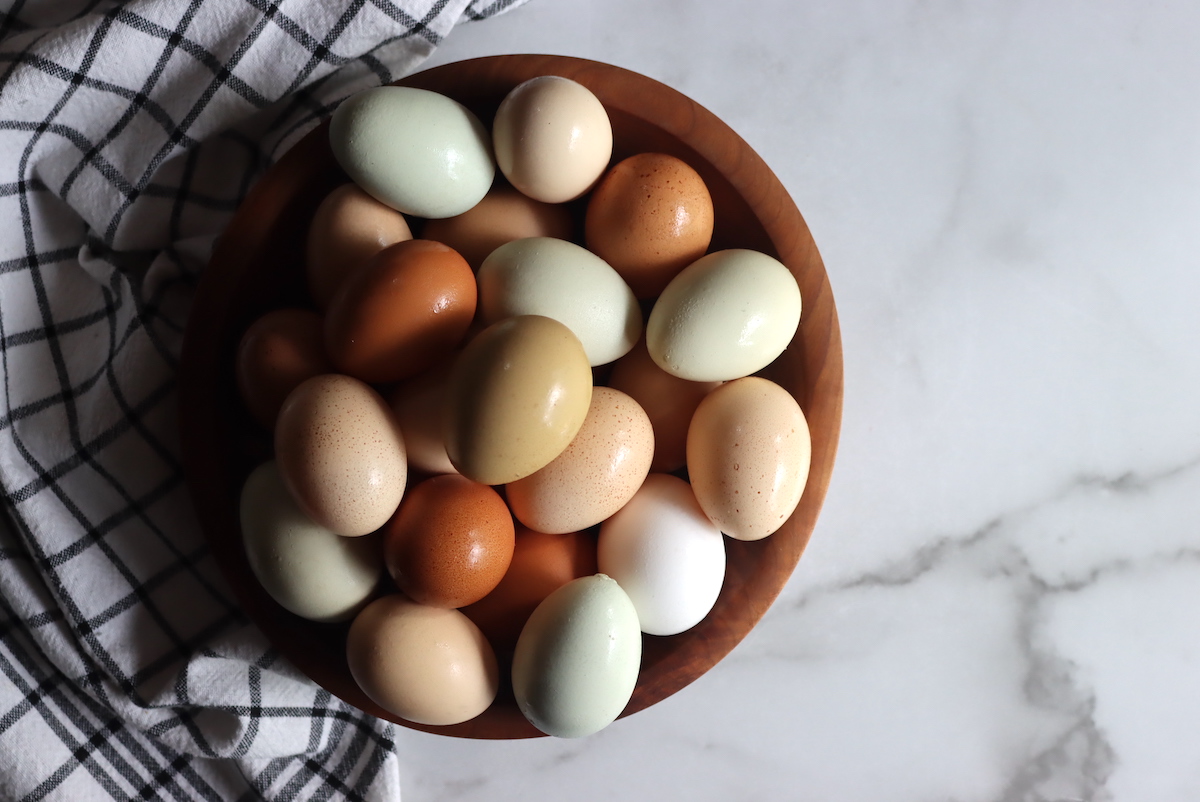
How Are Green Eggs Made?
Green eggs are made when a chicken breed that forms true blue eggs mates with a breed that lays light brown eggs. In order to understand how this color transformation happens, a basic lesson in chicken egg biology is useful. Once you know the basics of how chicken egg colors are formed, a whole world of color choices for your egg basket opens up!
At the very beginning of the process, a yolk (which is technically called an oocyte) is formed in the hen’s ovary when ovulation takes place. When the oocyte is formed, it will begin its journey through the hen’s oviduct. The oviduct is a tubular part of a hen’s anatomy that is roughly two feet in length; it’s in the oviduct that the inside and outside of the egg develops, eventually forming a shell. If the egg is fertilized by a rooster it will also occur while the egg is in the oviduct. From oocyte to laid egg, the entire process takes only 24 to 26 hours to complete.
The actual formation of egg color is one of the last stages of the egg’s journey through the oviduct. Egg shells are made of calcium carbonite, a naturally-occurring white mineral that looks just like, you guessed it, white egg shells!). For some breeds of chicken, the egg shell will stay white as it’s being formed, but for other breeds the last leg of the egg’s journey will coat the shell in a different color—typically in the last 90 minutes of its time in the oviduct. For example, if you inspect a brown egg, you may have noticed that the interior of the shell remains white while the outer coating of the shell is brown.
Blue eggs, however, are more of an anomaly in the world of colorful chicken eggs because they are 100% blue through-and-through—there’s no inner white shell to be found. The blue color is achieved by breeding hens that specifically produce a pigment called oocyanin, which is interestingly a by-product of bile. This is where the olive eggers come in: a true-blue laying chicken is bred with a brown egg-laying breed, resulting in blue egg that have been coated with brown pigment. This layering of shades is what eventually yields a beautiful green egg once laid.
So which breeds can be combined to make a hybrid olive green egger? I’m going to go over some of the best-known examples—as well as give you some information on the one rare breed of chicken that is known for producing a spectrum of green-shaded eggs all on its own.
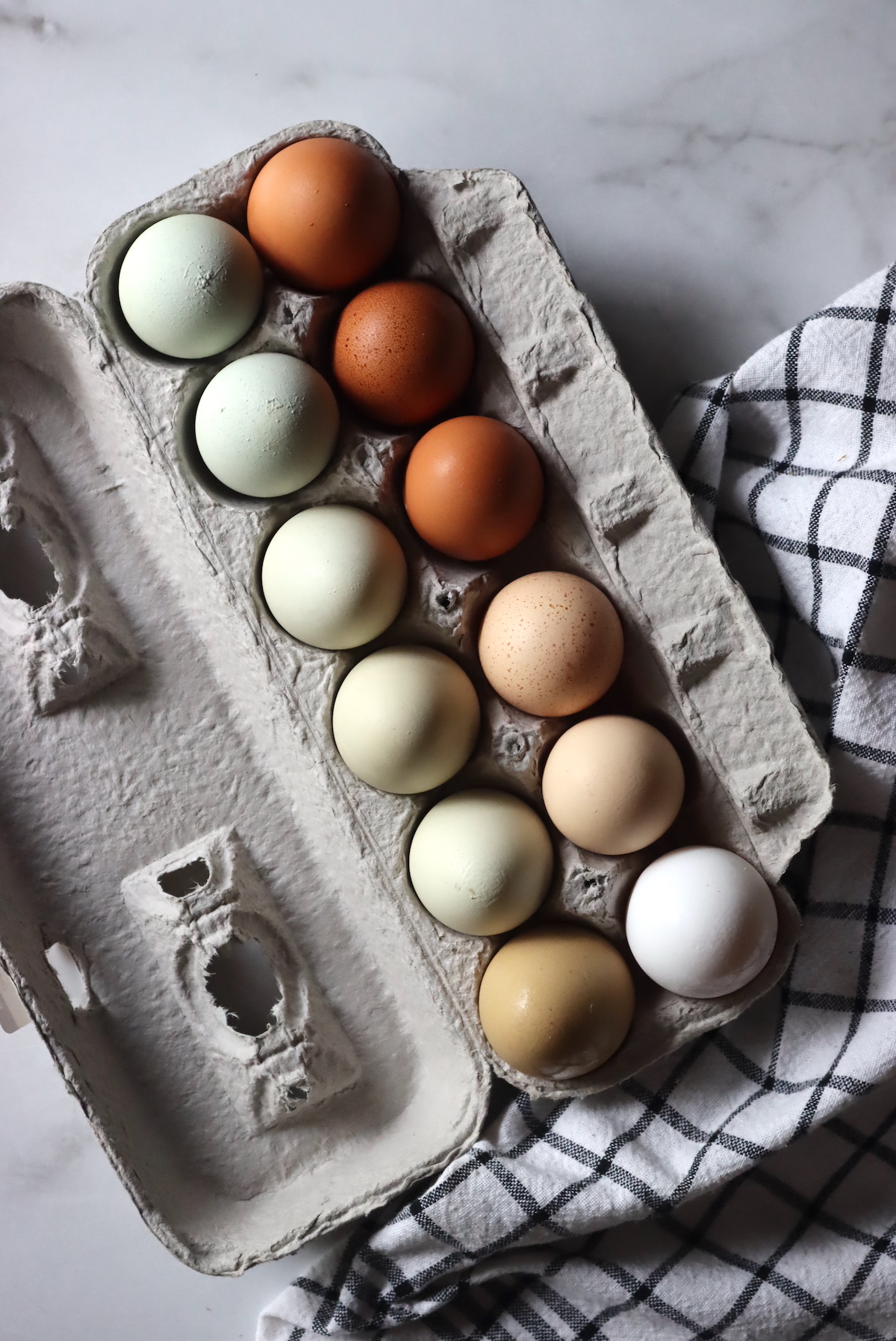
What Breeds of Chicken Make Olive Eggers?
As I mentioned above, olive egger chickens are made by breeding brown egg chickens with blue egg chickens. There are several types of chickens that can be bred together to create olive egger chickens, all of which will lay eggs with varying shades of green.
Blue Egg Chickens
The “big three” for blue eggs, these chickens lay eggs that range from pastel blue to light teal.
- Ameraucana: These blue egg-laying chickens are originally from Chile, where they were traditionally raised by the Mapuche people. Ameraucana chickens are decent egg layers and you can expect around 150 medium-sized pastel blue eggs a year. Ameraucana hens are highly fertile, thrive in free-range environments, make excellent little foragers, and are both cold and heat hardy.
- Araucana: Another blue egg-laying breed of chicken, this medium-sized bird also shares a common geographical origin with the Ameraucana. Araucana hens will lay upwards of 200 eggs per year, and are known for their friendly and inquisitive nature towards fellow chicken as well as humans. If you’re interested in raising Araucana chickens, keep in mind they’ll need a large coop and lots of room to roam around.
- Cream Legbar: These hens are medium-sized with large tufts of cream feathers with gray barring. Inquisitive by nature, Cream Legbars are good layers, averaging 200 eggs per year. Legbars get along well with other hens and are self-sufficient little foragers. These chickens like to have plenty of space when it’s warm out, but will need a covered place to roost during the winter.
Brown Egg Chickens
When it comes to brown egg laying chickens, you have a little bit more variety to choose from in terms of the breed you’d like to crossbreed.
- Maran: Marans are a type of chocolate egger, with hens laying roughly 3 large, chocolate brown eggs per week. Marans are a great choice if you’re looking for a winter hardy bird; they don’t thrive in hot weather. Maran hens are known for being quiet, docile birds.
- Welsummer: Welsummer chickens are a fairly recent breed of chicken—you might recognize their striking appearance as being the same as Cornelius the Kellogg’s rooster! With Welsummer hens, you can expect 4 eggs per week or 160 to 250 dark chocolate eggs per year (they’re also known for laying the occasional speckled egg). Welsummers are friendly but on the noisy side, and they love to forage for their own food.
- Barnevelder: Barnevelder chickens lay gorgeous, large dark brown eggs—3 to 4 per week or 150 to 200 eggs per year. “Barnies” as they’re affectionately named, are somewhat rare due to the popularity of their brown eggs. This breed is also known for being friendly and don’t mind confinement, making them a good choice if you don’t have a ton of room for your chickens to roam freely.
- Penedesenca: Famous for their deep, dark brown eggs (some eggs are so dark they look almost black), Penedesenca chickens originally hail from the Mediterranean, which means they thrive in warm weather and need lots of protection from the elements when it’s cold. On average, a Penedesenca hen will lay 3 to 4 eggs per week, or 200 eggs per year.
- Bielefelder: This docile breed has earned the nickname “gentle giant” thanks to its laid back nature and ease of care. Bielefelders are large chickens, with roosters reaching 10 pounds and the hens not too far behind. A relatively new breed (it was developed in Germany in the early 1970s) Bielefelder hens will lay up to 280 large brown eggs per year.
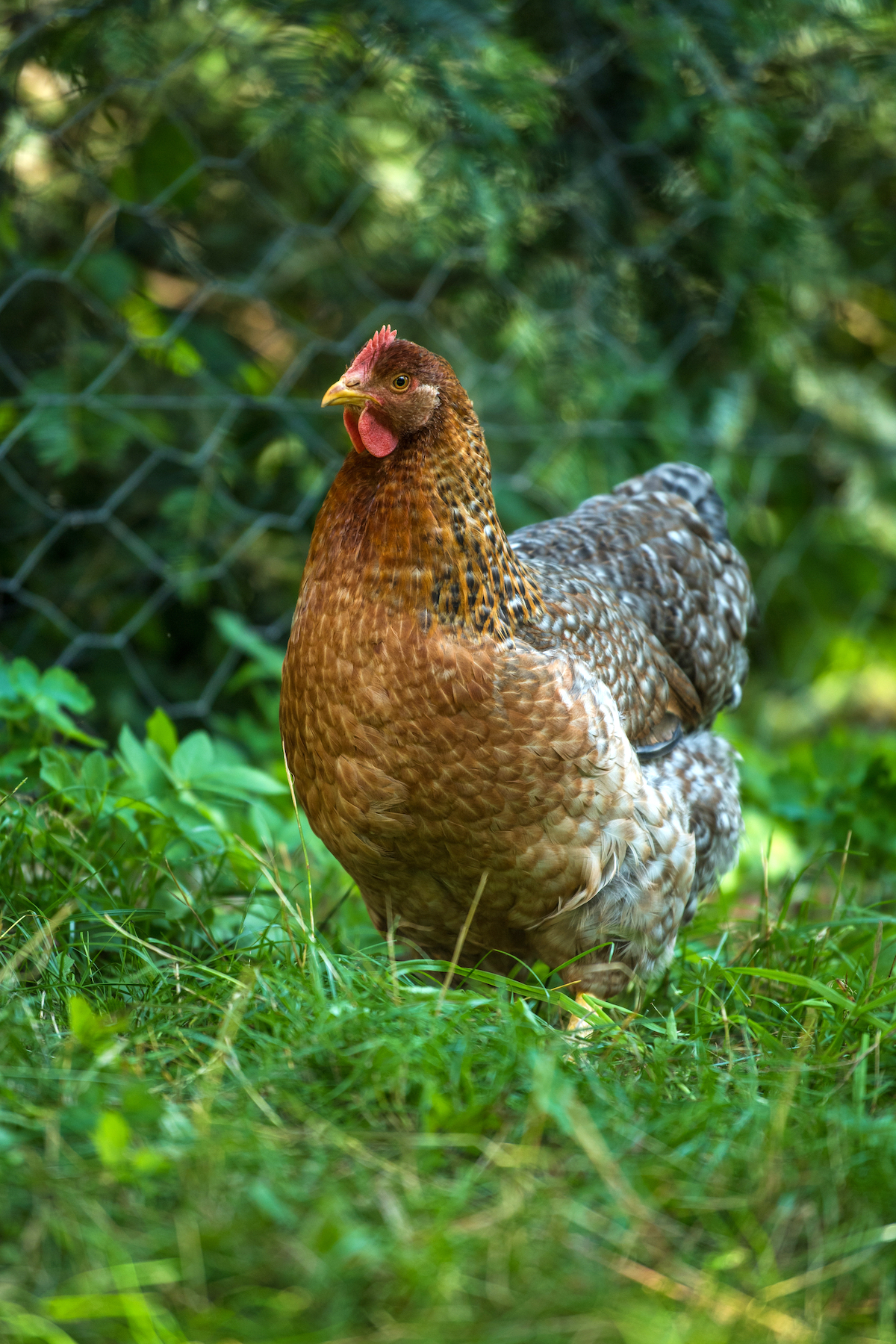
Pink Egg Chickens
Since pink easter egger chickens actually lay eggs with a pinkish-brown color, these birds can also be used with great success to produce green eggs. The breed most used to create green eggs are Buff Orpingtons and Salmon Faverolles.
- Buff Orpington: Originally from England, this breed of chicken was first developed in the nineteenth century by William Cook of Orpington. Known for having impressive egg-laying capabilities, Buff Orpingtons will lay as many as 200 to 280 eggs per year. Orpingtons are gentle birds and are quite cold hardy and require lots of shade and water when the temperature rises.
- Salmon Faverolle: Another friendly breed, Salmon Faverolles first came from France. Faverolles hens lay 3 to 4 brown- and pink-tinged eggs per week, or up to 200 per year. Salmon Faverolles are covered with pinkish brown feather that match the color of their eggs. Like Buff Orpingtons, this breed is cold-hardy but won’t tolerate too-warm temperatures.
When breeding chickens with the hopes of creating olive egger birds, remember that you won’t be creating an actual breed. Instead, the resulting chickens will be called olive eggers and the accompanying egg colors will depend on the combining traits of the two parents.
As an example, breeding an Americaunas hen with a Marans rooster will yield very dark green olive eggs while a crossbreed between Salmon Faverolles or Buff Orpingtons will produce eggs with sage green eggs (these chickens have a special name of their own if a Salmon Faverolles is used, they’re referred to as Favaucona birds).
What Purebred Chicken Breeds Lay Green Eggs?
There is one purebred chicken breed that lays green eggs, but they’re quite rare. This particular breed is known as Isbar chickens. Originally from Sweden, Isbar chickens were developed in the 1980s and are prized for their green eggs as well as their ability to lay plenty of them—at least 200 and up to 250 large eggs per year (in contrast with the fairly small size of the breed).
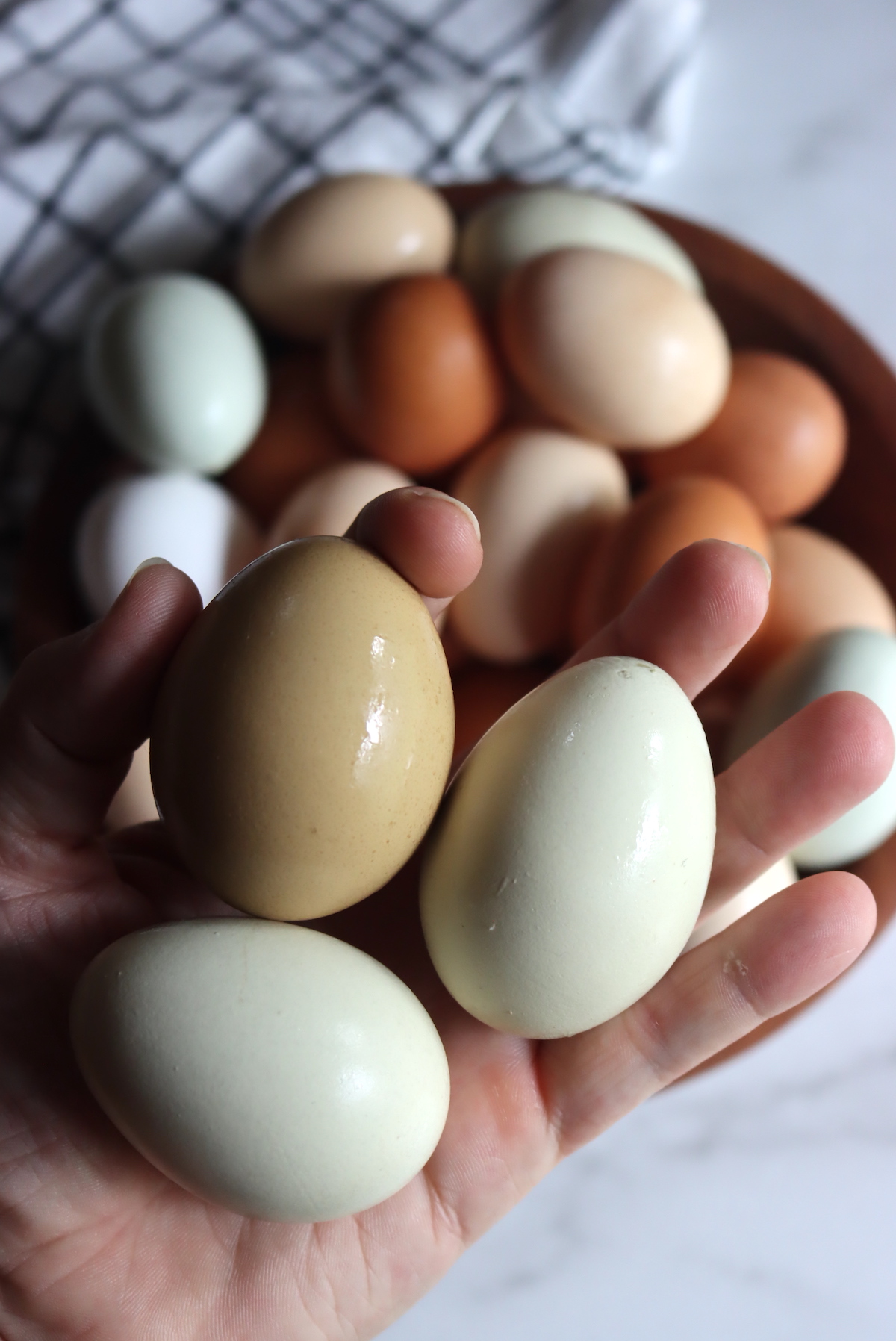
Isbar chickens lay light green eggs that range from mossy to mint green, and they’re really unique. Depending on the hen, Isbar eggs are typically a sort of pistachio or mint green color (or somewhere on the spectrum between olive green and sage green).
Isbar chickens are known for being cold-hardy creatures and will continue to lay eggs over the course of the winter. They’ll need plenty of room to roam free outside and they love to forage for themselves on top of their regular feeding schedule.
Looking for more information on which chicken breeds lay colorful eggs? Read my Guide to Chicken Egg Colors to learn all your options.
Chicken Guides
Need a bit more help with your backyard flock?
- How Much Does it Cost to Raise Chickens?
- Easy Homemade Pickled Eggs
- Duck Eggs vrs. Chicken Eggs: What’s the Difference?
- Storing Eggs in Limewater (Keeps 12+ Months!)
- 30+ Ways to Preserve Eggs
